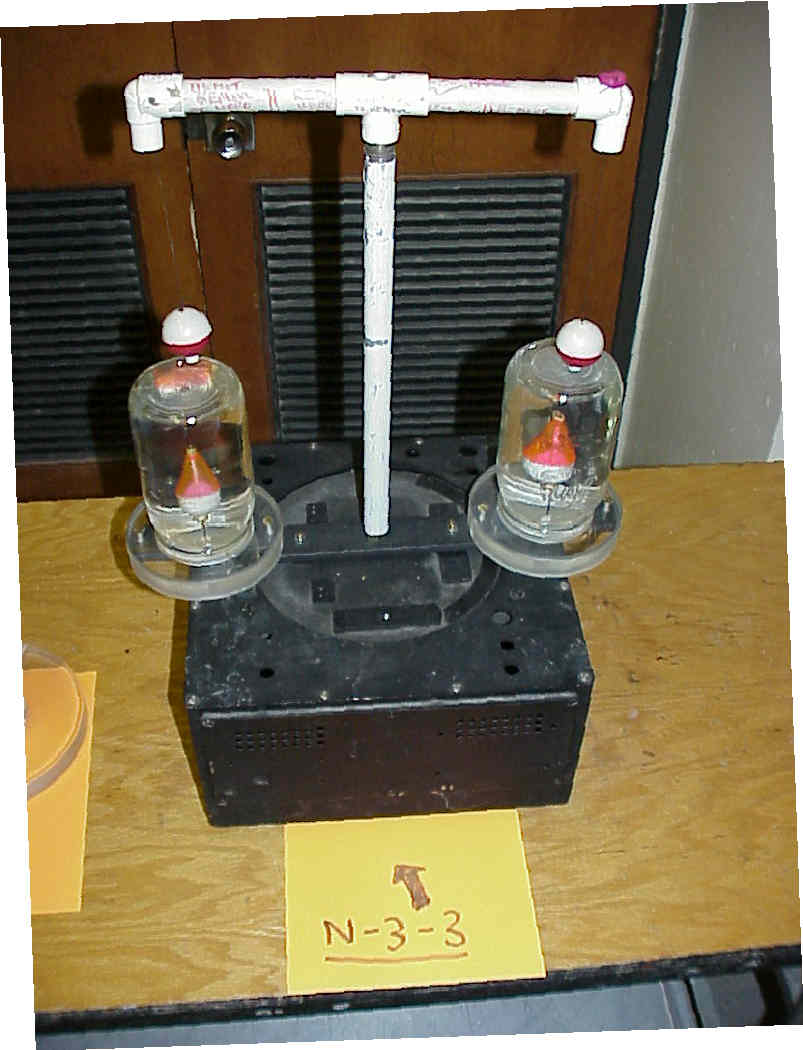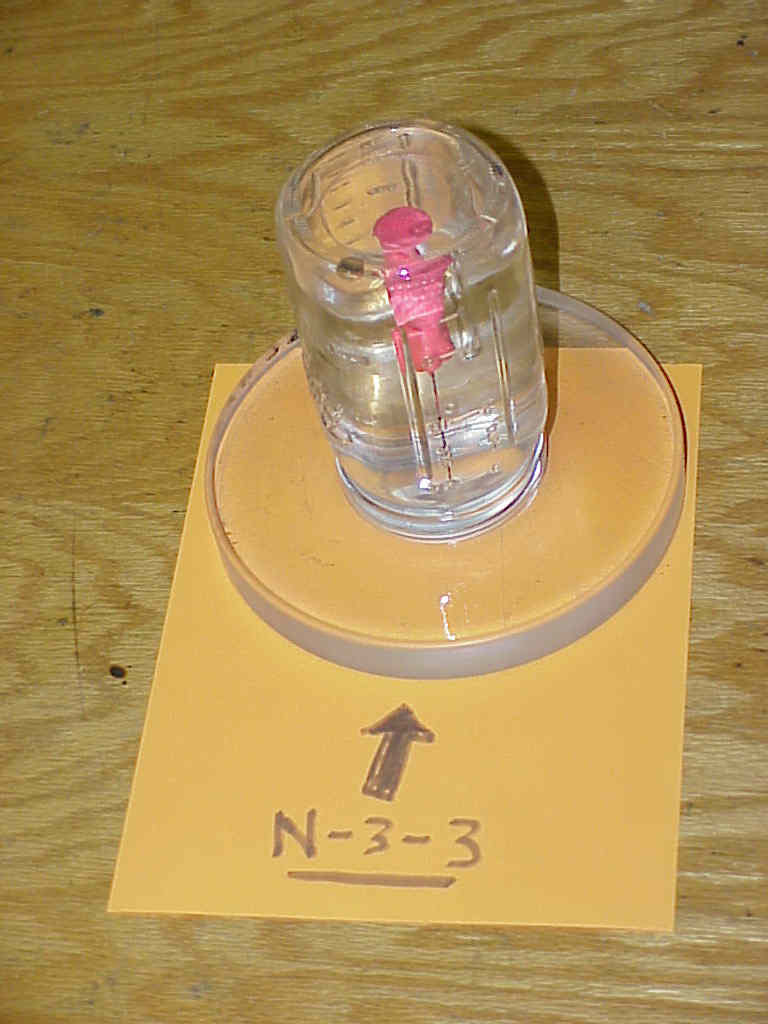Physics Demo Number: 028 |
Approximate Run Time: 5 min |
||||
Uniform Circular Motion and Centripetal Acceleration |
|||||
Demo DescriptionA floating cork, tethered to the inside of the bottom of a jar of water, indicates the direction of the acceleration involved when the jar's state of motion is altered from rest. Indeed the tethering string changes from vertical inclination to a non-zero angle from the vertical in the plane determined by the direction of the acceleration and the vertical. |
|
Scientific Principles
|
|||
Equipment
|
|
Equipment Location
|
|||
1
|
|
2
|
|||
InstructionsThe two pictures show three glass quart jars that have had plastic flanges made to replace their normal tops. Note that one may invert the water- filled jars and have fishing corks floating below the top surface of the water by means of strings tethering them to the flanges. In picture 1, the two flange-jar units are further mounted to the ends of a metal bar which may freely rotate about a vertical axis, thus allowing those two units to move in uniform circular motion. Additionally the rotating platform has two cork units hanging in air (vertically above their corresponding 'water- floating- tethered companions' in the static configuration of the platform unit). These air corks will rotate with the jars when attached to the PVC structure that supports them.. The corks can easily be left off by removing the PVC rods from the PVC Tee. One can slide the jar unit in picture 2 around on the lecture table to establish the fact that the unit is a direct reading acceleration meter, with the cork floating off-vertical in the direction of the acceleration imposed. Now setting the rotating platform jar units into uniform circular motion and noting that their corks float to the inside establishes experimentally that uniform circular motion gives rise to inward pointing acceleration. |
|||||
Writeup created by David BurbaCopyright © 2013, Vanderbilt University. All Rights Reserved. |
|||||

